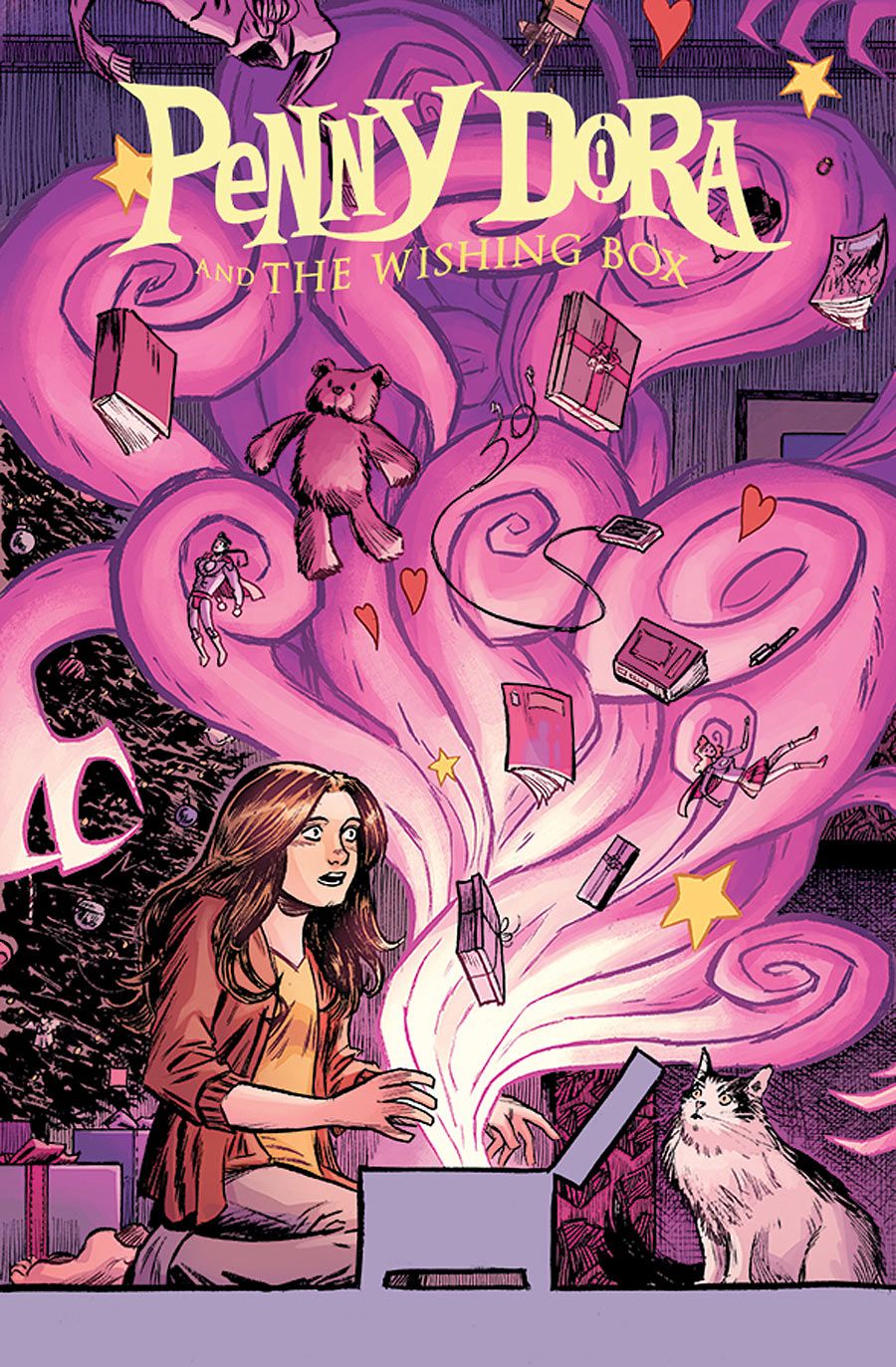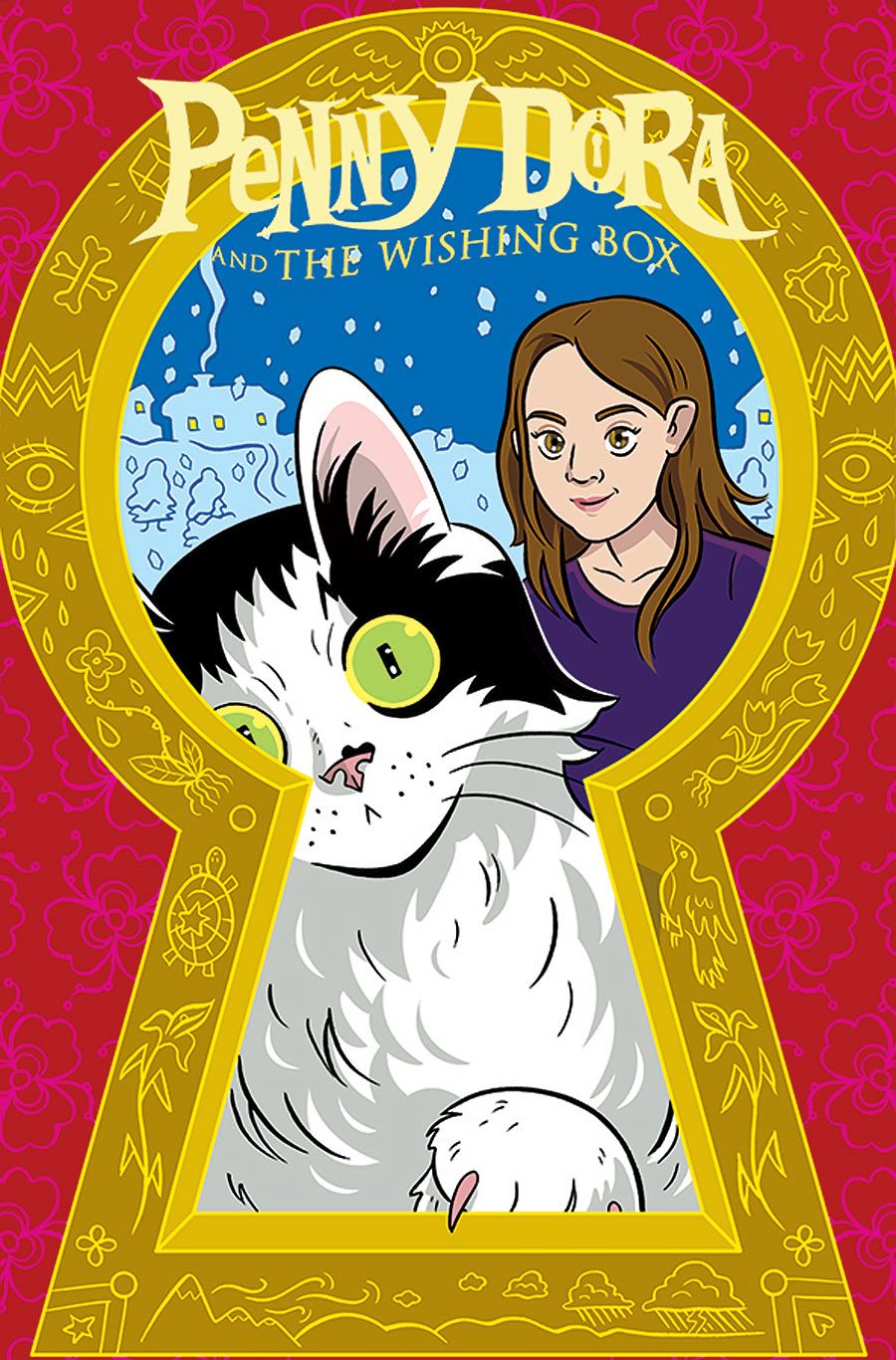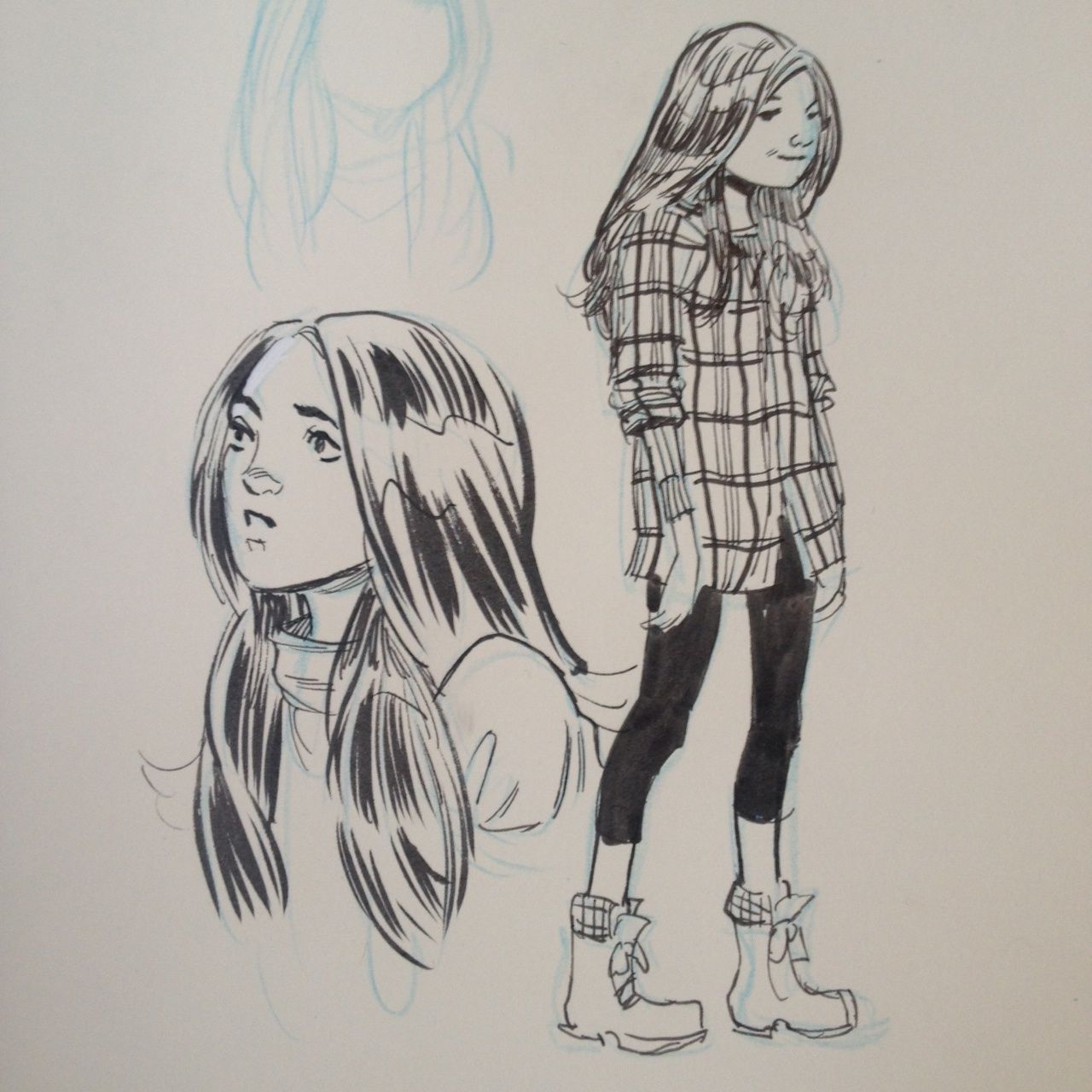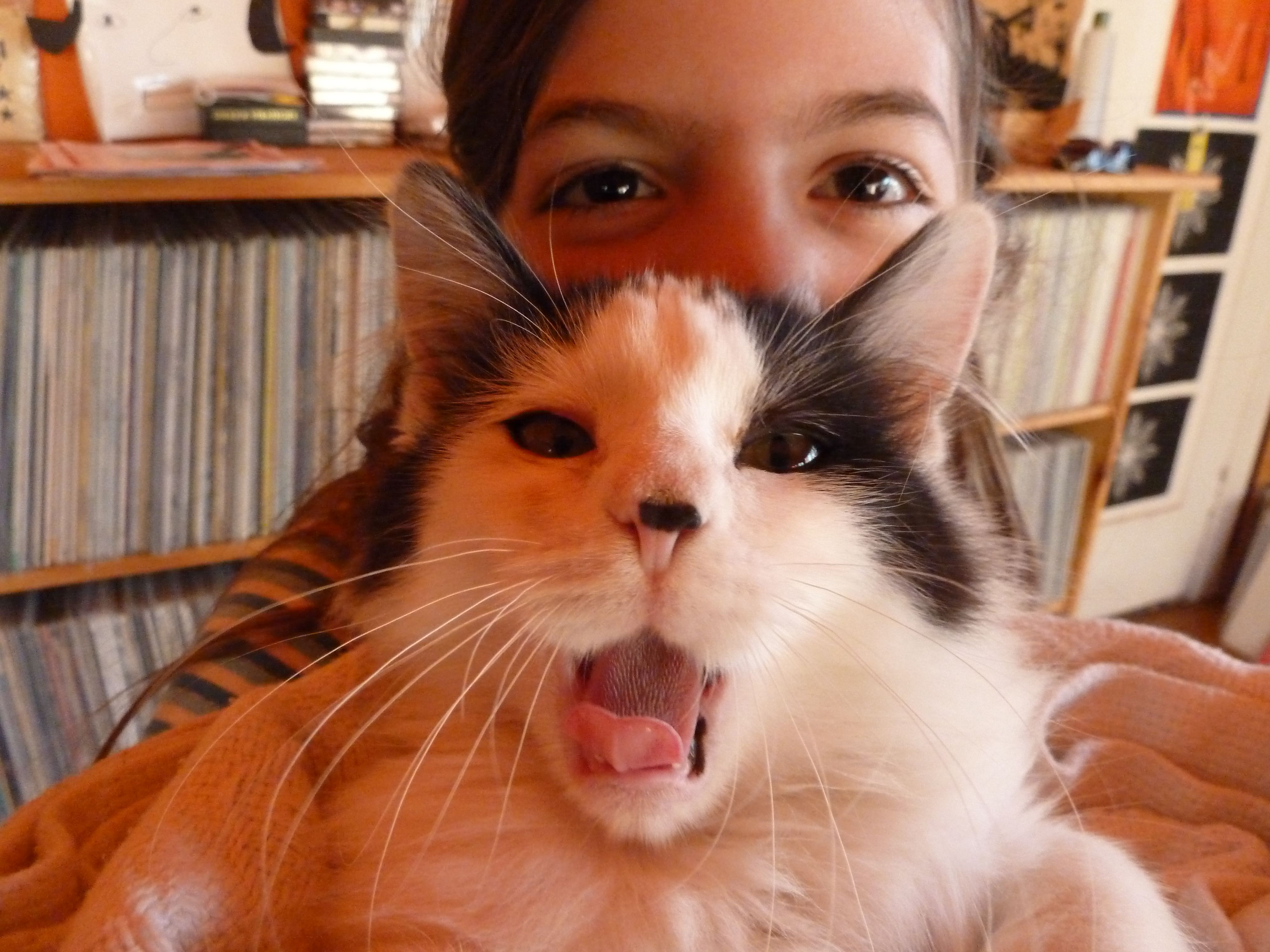Five years ago, eight-year-old Nico Stock began telling stories about a magical world where a young girl named Penny Dora finds a special box with the power to grant wishes. Nico shared Penny's adventures with her father, Michael Stock, who started reading the tales during a radio show he hosted thus forging their creative collaboration. Now the pair has teamed up with artist Sina Grace to bring Penny's adventures to the pages of a five-issue miniseries launching this November from Image Comics.
The all-ages comic starring a brave young girl and her adorable cat Iggy is the latest in a small wave of creators bringing new all-ages materials to Image, and with a team like the Stocks and Grace, "Penny Dora and The Wishing Box" promises to be delightful. CBR News spoke with Michael about Penny Dora, opening our own Pandora's box to uncover details about the writer's approach to all-ages material, his collaboration with Grace and how his daughter is tired of seeing stories about girls being saved.
CBR News: Penny Dora started through conversations with your daughter. Can you tell me more about that?
Michael Stock: The first issue of the book is actually based on a story Nico wrote for her school newspaper when she was eight (she's 13 now). At nine, she wrote a second installment of the story which provides the sort of set up for issue #2, introducing Penny's best friend, Elizabeth, who goes on to be at the crux of the story (and mayhem) of the first five-issue arc. The plan is to run both of Nico's short stories in the backmatters pages of "Penny" #2, along with some other fun stuff which Nico is cooking up: a Magic Maze, character word search, connect-the-dots and I'm not sure what all...
Nico read both of her stories on my "Part Time Punks" radio show on KXLU 88.9FM back in 2009 -- both of which ended with these sort of dark, twisty "Twilight Zone"-style endings...well, an eight year-old's version of "The Twilight Zone" who had not at that point even seen an episode. Since then, I continue to get calls from listeners wondering whatever happened to that creepy magic box.
RELATED: "Penny Dora and The Wishing Box" #1 PREVIEW
It was one of those calls last summer that inspired me to dig those stories out and use them as the foundation for the world of "Penny Dora and The Wishing Box."
How has her approach to telling the story changed as she gets older? Are you seeing her mature through this collaboration?
When Nico first wrote the story, her hero was the same age as she was. By the time I'd decided to turn the story into a comic, Nico was 12. It was actually her suggestion to split the difference and make Penny Dora ten years old. She pointed out it made more sense to have an independently-mind girl who would be free to roam about on her own in the safe little Southern California suburban town. That's the sort of distinction that wouldn't have crossed her mind when she was eight.
Nowadays a lot of our conversations have to do with the mythology of the Wishing Box -- its origins, its limit of power (or lack thereof). She has a great sense of setting up the rules of world-building and knows the importance of creating a consistent mythology -- no doubt from growing up on a healthy diet of comics (and, recently, a steady stream of "Buffy" and "X-Files" episodes). I've really seen a crazy learning curve in her within the last year or so on things like this.
Has she had any input on the look of the comic?
Most of Nico's input on the look of the comic has tended to focus on the cat in the book named Iggy -- who is a spot on version of our own cat, right down to his fixation on one particular food group: HAM. So she's been sending a pretty endless stream of photos of Iggy to Sina to his endless delight of photo reference. I, in turn, have been sending Sina almost as many pictures of young Nico, since Penny Dora is a pretty spot on version of Nico at age ten!
How did the collaboration with Sina come about?
Initially we met thru Tomm Coker, another Image creator, who had given a guest lecture at one of the courses on comics I was teaching at CalArts. He knew I was a massive Image fan and Sina was a massive music fan and thought we should meet. Sina had already been to Part Time Punks a number of times (the weekly club-night I book/promote/DJ at The Echo in LA). And once we met we soon learned we had a number of mutual friends in the indie music world. So it was one of those things where we were both kinda surprised we'd never met before.
This was last fall when I was just finishing the script for the first "Penny" arc, so I was about to start the hunt for an artist. And Tomm said, "Oh you should talk to this guy, Sina, he knows everyone; he can help you find someone." But then two things happened: (1) Sina read the script and really loved it; and (2) I saw the first issue of "Burn the Orphanage" really loved the art. So the hunt stopped there!
How did the collaboration with Sina come about?
Initially we met thru Tomm Coker, another Image creator, who had given a guest lecture at one of the courses on comics I was teaching at CalArts. He knew I was a massive Image fan and Sina was a massive music fan and thought we should meet. Sina had already been to Part Time Punks a number of times (the weekly club-night I book/promote/DJ at The Echo in LA). And once we met we soon learned we had a number of mutual friends in the indie music world. So it was one of those things where we were both kinda surprised we'd never met before.
This was last fall when I was just finishing the script for the first "Penny" arc, so I was about to start the hunt for an artist. And Tomm said, "Oh you should talk to this guy, Sina, he knows everyone; he can help you find someone." But then two things happened: (1) Sina read the script and really loved it; and (2) I saw the first issue of "Burn the Orphanage" really loved the art. So the hunt stopped there!
You mentioned how the location plays a role in the story, and with both you and Sina being in Southern California, I'd love to hear more about that.
The story is actually set in the pre-planned suburban community of Cuesta Verde, CA. Horror fans out there will of course recognize that as the fictional city where the first "Poltergeist" film took place (meant here as a subtle hint of the sort of suburban creepiness to expect). And definitely my years as a freeway flyer living in LA and teaching at UC-Irvine provided me with plenty of good photo-references to forward on to Sina. But really, Penny's hometown is a stand-in for Suburbia, USA, or any sort of soul-crushing suburban city in the country where kids are growing up wishing for escape.
We won't actually see LA until the second story arc, which involves the exploration of a couple of Penny's tentative, testing wishes -- two wishes a lot of younger readers out there have probably made for themselves: (1) the wish that she lived somewhere else; and (2) the wish that she was older.
Tell me a little more about the title character herself. Where is Penny when we meet her? What is her life like?
We meet Penny on the day before Christmas playing fetch with her cat Iggy in the suburban home in Cuesta Verde, CA where she is being raised by her (single) mom. We soon see that although Penny is very close with her mother, her Mom doesn't totally get that her little girl is not such a little girl anymore.
The suburban setting is central to some of the themes the book explores -- individuality, responsibility, and independence. And by the end of the third issue we see very clearly the sort of threat a Wishing Box can be to such a place...and one of those threats starts with a capital 'D' for DRAGONS!
This is planned to be a five-issue miniseries, but do you have more Penny stories to tell?
YES! I have the second story arc mostly outlined already. Book 2 focuses more on the origins of the Wishing Box and the testing of Penny Dora -- the limits of her strength, will power and imagination. And, without giving too much away, I will tell you that this involves the mysterious teenage Goth Girl named Kira who we see creeping around at the edges of panels starting in issue #2.
[*Spoiler alert.*] One thing I will give away...okay a couple things actually... In the second arc we soon discover is that Kira was the previous keeper of the Wishing Box. But only the most recent. While the history of the Box is hinted at going back to the Greek myth of Pandora's box, there is a severe time limit on how long each keeper is allowed to keep the Box, specifically the duration of adolescence. Each keeper is given the box when she is ten, and must find the next Keeper when she turns fifteen. Also, the last wish each Keeper must make is always the same: to forget she ever knew anything about the Wishing Box. Otherwise, of course, as an adult, she might be tempted to come back and find the Box and use it for less innocent means.
So yeah, a definite bit of a Tolkien thing going on here, in case you hadn't already guessed it. Why this is, and why Penny is chosen as the next keeper of the Wishing Box...? Well, that stuff is still a secret...but I will tell you this -- it has a lot to do with Pandora's Daughters.
Do you have any more collaborations you'd like to do with Nico?
Also a resounding YES here in answer to this question. I'm currently outlining another all-ages book involving a Father-Daughter superhero team of sorts along with their three cats. There are always cats in there somewhere! This also stems from an idea from some years back that she and I hashed out over a series of dinnertimes. We actually got as far as outlining a whole first issue to our then-imaginary series, and Nico even drew the first page.
As a parent, what things are important for you in all-ages comics?
From the very beginning, one of the most important things to me in all-ages comics is to have positive role models. And specifically, more FEMALE role models -- "heroes" being just one word for those.
When Nico was little, she loved lots of the Silver Age superhero stuff no matter what the gender: "Fantastic Four," "Legion Of Superheroes" and pretty much anything with Supergirl, Streaky The Supercat and/or Lois Lane. Now, she's pretty much only interested in books with female protagonists and heroes. And the Big Two still remain conspicuously slight on those.
Among her recent favorites (and mine) are G. Willow Wilson's new take on "Ms. Marvel," Brian K. Vaughn's stint on "The Runaways" and of course "Coraline" and "Courtney Crumrin," which are definite inspirations on "Penny Dora and The Wishing Box."
These days, as a single-father of a teenaged girl, I think a lot about issues of individuality and independence. Especially resistance to peer pressure. In "Penny Dora," this plays out on the one-on-one level of Penny and Elizabeth, the girl who may or may not be her best friend by the end of the first arc, and on the larger level of Penny and her community -- specifically, a pre-planned community where seemingly everything is designed to produce cookie cutter children; heirs apparent to the Stepford husbands and wives who populate the suburban Southern California town.
When I read this question to Nico she said mainly she was tired of reading books about girls who needed saving. "Especially SUPERHERO GIRLS who need saving. They're the ones who should be DOING the saving!!" she pointed out emphatically. Those are the sort of books she wants to be reading more of, and the sort of books she wants me to be writing!
"Penny Dora and The Wishing Box" #1 will be in stores November 5 from Image Comics.





